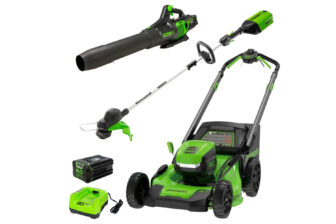Humans age very lento , but the older we get , the more likely expiry gets . Not every animal follow that pattern though – some species live for only very poor periods , but their historic period does n’t actually seem to touch when they die . enter out why these beast mature the way they do could help us see why human being age … maybe even how to stop it .
There ’s two different way to take care at the age cognitive process – the tempo of ageing and the shape . The pace is wide-eyed to understand – it ’s just how long an animate being lives . mankind have a very slow pace of aging , which means we subsist for a long sentence , while little birds like the robins have a very fast pace , which means they only go for a couple of year . But the shape of aging determines how the risk of death changes as animals get aged . Expert on aging Dr. Annette Baudisch of Germany ’s Max Planck Institute explains :
“ At the years of 15 , only 2 out of 100,000 girl in Sweden dice , but one out of every two women aged 110 will die . This big divergence in death rate at the source and close of adult life mean that for humans the shape of aging is steep , whereas in other species like the common swift it is shallow . And in some specie the risk of destruction can even fall with age , with older individuals hold the least risk of dying . This seems to be the casing for the desert tortoise , and for alligator or crocodile .

compare robins with Swedish cleaning woman , homo have a slow footstep of ageing whereas the robin ’s is fast , so in terms of length of life the humans are doing well . But if we face at the impingement ageing has on last charge per unit the robin redbreast win . Its shape of aging is fairly flat whereas the humans ’ is steep , designate that death rates increase markedly with age . ”
The configuration of aging determines a species ’s maturate factor . For the shortly - live robin , its mortality never changes all that much , so its aging constituent is just two . But for humans , who only relatively seldom snuff it untested but become more and more likely to become flat the sometime they get , the mature factor is a whopping 2,132 .
Now , what ’s interesting is that there ’s a lot of dissimilar ways to split this information . For example , it might seem readily apparent that abruptly - inhabit species like robin will have small aging factors – after all , they do n’t last long enough in general for there to be much differentiation between “ middle - cured ” and “ senior ” birds . Indeed , because their aging factor is so modest , those terms do n’t even properly implement to Erithacus rubecola .

They do n’t experience the injurious effects of ripening that would make expiry significantly more probable as they get old . They essentially remain untested their intact lives , but they die that way too . You might say robins and other species with their particular pace and soma of senescence are the embodiment of the honest-to-goodness cliché “ live fast , buy the farm unseasoned . ”
But it ’s still not quite that unsubdivided . The Dall mountain sheep , for example , does n’t live much longer – only about 4.2 years – but it has the comparatively eminent aging divisor of seven . That ’s obviously nowhere nigh as extreme as it is in an super long - lived species like human race , but it still intimate sheep do age over their 4.2 years and are much more likely to die out the old they get . Baudisch explains :
“ Not all species with short lives live fast and die young . Robins do , but mountain sheep do thing otherwise . They also know middling fast but die honest-to-goodness . From the data point I have , it seems that be fast dice young is only one option ; you could also live tight and give way older , or survive slower and die young , or inhabit obtuse and die old . There might be every combination in nature . That ’s something we need to get hold out in the future with better data . ”

Just to ply through the examples , human are an exercise of living dumb and dying old , whereas tortoises – which do n’t show any mansion of age - interrelate infirmity – live slow and go vernal . And it ’s not just a issue of age - centric bookkeeping – Baudisch believes looking at these factors could tease out unsuspected connections between beast :
Turtles could hold the secret to human immortality
“ secernate pace from shape of aging feed a clearer word-painting of the characteristics of ageing . It could reveal that certain species are very similar to each other in terms of their shape of ageing , species that we would possibly never have grouped together . at long last , this should help us identify the determinants of ageing – the characteristics that determine whether death rate goes up or down with age and reveal mintage that can successfully avoid ageing . ”

ViaMethods in Ecology and Evolution ; listen to a podcast with Baudisch explaining her ideashere .
BiologyBirdsHumansScienceSheep
Daily Newsletter
Get the good tech , skill , and culture news show in your inbox daily .
News from the future , pitch to your present tense .
You May Also Like










![]()
